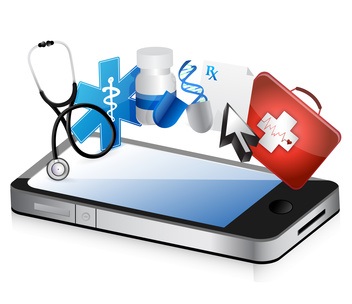Blog Articles
Wednesday, January 14th, 2015
written by Sahiti Myneni, PhD, MSE

The mHealth—or mobile health—ecosystem is rich and ever-growing, allowing researchers, technologists, and the general public to make use of health technologies that are portable, affordable and scalable [1].
The revolutionary use of digital sensors and smartphones makes possible remote patient monitoring and enhanced consumer engagement, which are the markers for meaningful use stage III and beyond [2].
Smartphone apps represent the bulk of the mHealth technologies used by general health consumers. These apps, accessible through devices that are now ubiquitous throughout our society, provide them a way to track their health behaviors and self-mange chronic conditions (e.g. diabetes, cancer therapies, weight management). In 2013, it was estimated that 500 million patients would be using such apps by this year [3] [4].
Smartphones are excellent venues for furthering global health research and enhancing public health promotion because of their core functions, text messaging, real-time voice communication, and the remarkable estimate that nearly 2.5 billion people worldwide will have smartphones by the end of 2015 [5].
In addition to revolutionizing the care delivery processes, reams of patient-generated health monitoring data allow informaticists to conduct big data analytics that can help offer better personalized experience to the end users of mHealth technologies.
Recent advances in cloud-based computing and health-related social media platforms have spun off two of the latest trends in mHealth research and practice: networked health and social diseases.
Networked health is an example of clinical informatics application, allowing health institutions to offer advanced telemedicine services to remote areas and private sharing of doctors’ notes and lab results with patients immediately after an appointment. Similarly, social disease practices is an example of public health informatics application, which gives scientists the ability to track social media postings and apply intelligent analytic capabilities using methods in machine learning and natural language processing.
The information yielded from these areas can provide great opportunities to improve public health disease surveillance and emergency response preparedness.
In summary, mHealth holds a great deal of promise in the years to come in the areas of health care delivery, patient engagement, health promotion and disease surveillance. Stay tuned to UTHealth SBMI to see how our faculty and students continue to lead in mHealth and other cutting edge health care applications of technology and information.
References:

Dr. Sahiti Myneni is an Assistant Professor at UTHealth School of Biomedical Informatics. Her research interests include consumer informatics, health-related social media analytics, data-driven digital health technologies and idea to product translation (mHealth device development and testing). Myneni's current research focuses on health-related online social network analysis that builds on qualitative, automated and quantitative methods informatics-driven solutions in the domains of consumer and population health.